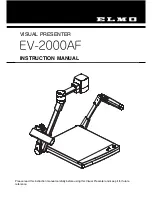
After the DP1, Youll Never Feel the Same Way About Image Quality
A direct image sensor
that will rock your world
In developing the SD series of
DSLR cameras, Sigma has used the
Foveon X3® direct image sensor
right from the outset. Its outstanding
image quality performance has
earned high praise from users
around the world who have very
high standards when it comes to
image quality. "SD image quality
is something else" and "pictures
taken with an SD have an emotional
quality", are typical comments.
With their solid, nuanced feel and
amazing vividness, images taken
with SD-series cameras have
a quality that cannot be adequately
explained in terms of figures and
pixel counts: "emotional image-
quality" is perhaps the only way
to put it. The secret behind this
extraordinary image quality lies in
the revolutionary mechanism of this
unique direct image sensor.
The difference between a color
sensor and a monochrome device
Apart from the SD series, almost all
the digital cameras on the market
use monochrome sensors, only
capable of capturing light intensity.
Because these sensors do not
capture color data, a color filter
with a mosaic of pixels for the three
primary colors – red, blue and green
(RGB) – is mounted on top so that
color data can be represented.
But each light-sensing photodiode
has a one-color filter, which means
that each pixel can only capture
one color, and data for the other
two colors is discarded. The full RGB
complement is restored by
a color interpolation process known
as demosaicing, performed in the
latter stage of the image processing.
Having been continuously improved
over an extended period, this
image-processing method has
matured to a certain extent.
If the subject contains a high
proportion of solid color, it does not
pose much of a problem. However,
a single shot of a subject featuring
complex intermingling of colors will
instantly reveal its weakness.
Fine patterns, subtle textures and
areas of finely-intermingled colors
cannot be reproduced properly by
the conventional technology.
Full-color capture system delivers
"emotional image quality"
The DP1 uses the same integral
14 megapixel direct image sensor
as the SD14. Utilizing the special
features of silicon, which is
penetrated to different depths by
different wavelengths of light, this
direct image sensor succeeds in
full-color capture with the full RGB
complement for the first time ever
in a single-pixel location.
Just like film, each photodiode
captures all the RGB data, so no
final-stage demosaicing is required,
and exquisite, nuanced color
expression can be handled in pixel-
location units. The "emotional image
quality" delivered by the direct image
sensor owes everything to the high
"color resolution" achieved using this
unique sensor configuration.
Loss-free capture of light
and color data
That, however, is not the full story.
In an ordinary digital camera using
a color filter array, demosaicing can
sometimes add what are known
as "color artifacts", or colors not
actually present in the subject.
These are caused by the action of
the mosaic-form color filter when
capturing an image featuring more
than a certain level of detail
(i.e. high-frequency components).
In an ordinary digital camera,
another filter known as an optical
low-pass filter is placed over
the sensor in order to stop color
artifacts occurring. The job of the
optical low-pass filter is to cut out
any high-frequency components
which exceed a certain level.
Although this does effectively
inhibit color artifacts, the downside
is that the color resolution of the
image deteriorates. In other words,
an ordinary digital camera loses
data at two stages: first the image
signal captured by the lens has
high-frequency components cut
out by the optical low-pass filter,
and after that, two of the 3 primary
colors are cut out by the color filter.
Because it does not need a color
filter, the DP1's direct image sensor
does not generate the color
artifacts that color filters produce.
So, obviously, it does not need
an optical low-pass filter either.
Its full-color capture system can
handle all sorts of spatial high-
frequency components, and
the full complement of primary
colors, which is precisely why
the DP1 can deliver that special
"emotional image quality".
A camera born of Sigma's
unique image-quality standards
and sustained obsession with
photographic expression.
The world's first high-performance
compact digital camera with
an integral full-sized image-sensor.
That would be the DP1.
17








































